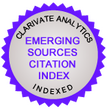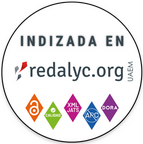CHARACTERIZATION OF INTERINSTITUTIONAL COOPERATION IN PARANÁ STATE: AN ANALYSIS FROM THE UNIVERSITIES PERSPECTIVE
DOI:
https://doi.org/10.13058/raep.2016.v17n2.370Keywords:
Interinstitutional Cooperation, Universities, Enterprise, Research InstitutesAbstract
This study aimed to characterize the collaboration in which the university is one of the parties involved, in particular the model relationships between University Enterprise (U-E), University-University (U-U), and University-Research Institutes (U-RI). In this descriptive research, the methods used were of qualitative and quantitative nature. It was found that a significant part of the reference available regarding this topic is still centered in the relationship between universities and companies. For the items that compose the dimensions of facilitators, barriers, motivators, and determinants for the interinstitutional cooperation, it was found that there were differences according to the type of partner which the academic institutions are involved with. In addition, it was also observed that each type of interaction has certain specificities regarding the contractual instrument which guides the cooperation. Another finding concerns the prevalence of the joint research in the field of the exact sciences. Once identified the factors that interfere with the interinstitutional cooperation, it is suggested as a potential future research the assessment of the contribution of each factor through the quantile regression techniques.Downloads
Downloads
Published
How to Cite
Issue
Section
License
By publishing a manuscript in the journal Administração: Ensino e Pesquisa (RAEP), the authors declare that the work is of their exclusive authorship and therefore assume full responsibility for its content. The authors grant RAEP a non-exclusive rights license to use the work in the following ways:
(1) Sell and / or distribute the work in hard copies or electronic format.
(2) Distribute parts of the work as a whole to promote the journal through the internet and other digital and printed media.
(3) Record and reproduce the work in any format, including digital media.
Authors and readers are permitted to share the material, use it in classes, for presentations and also for other purposes, and to create new knowledge based on any RAEP publication, as long as the due credit is attributed to the original work and the respective author(s), through citations, references, and other means.
The journal adopts preventive measures to identify plagiarism using software designed for this purpose.
RAEP does not charge authors for the article submission nor for the publishing of approved articles.
In line with the journal's policies, each published article will be given a Creative Commons CC-BY 4.0 license.










